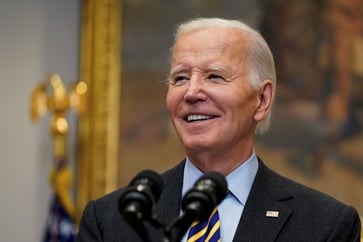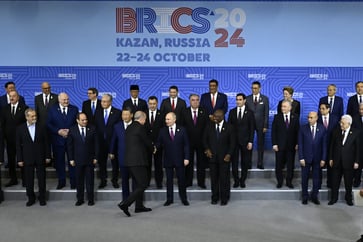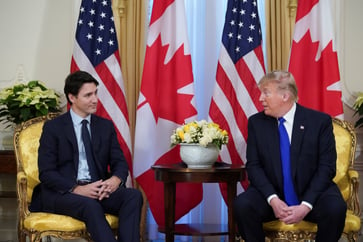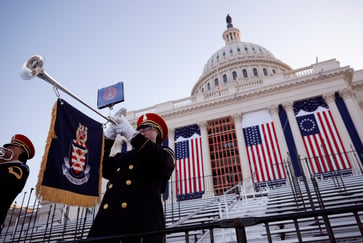Britain and the United States launch fresh strikes against Yemen's Houthis, responding to attacks from militants backed by Iran.
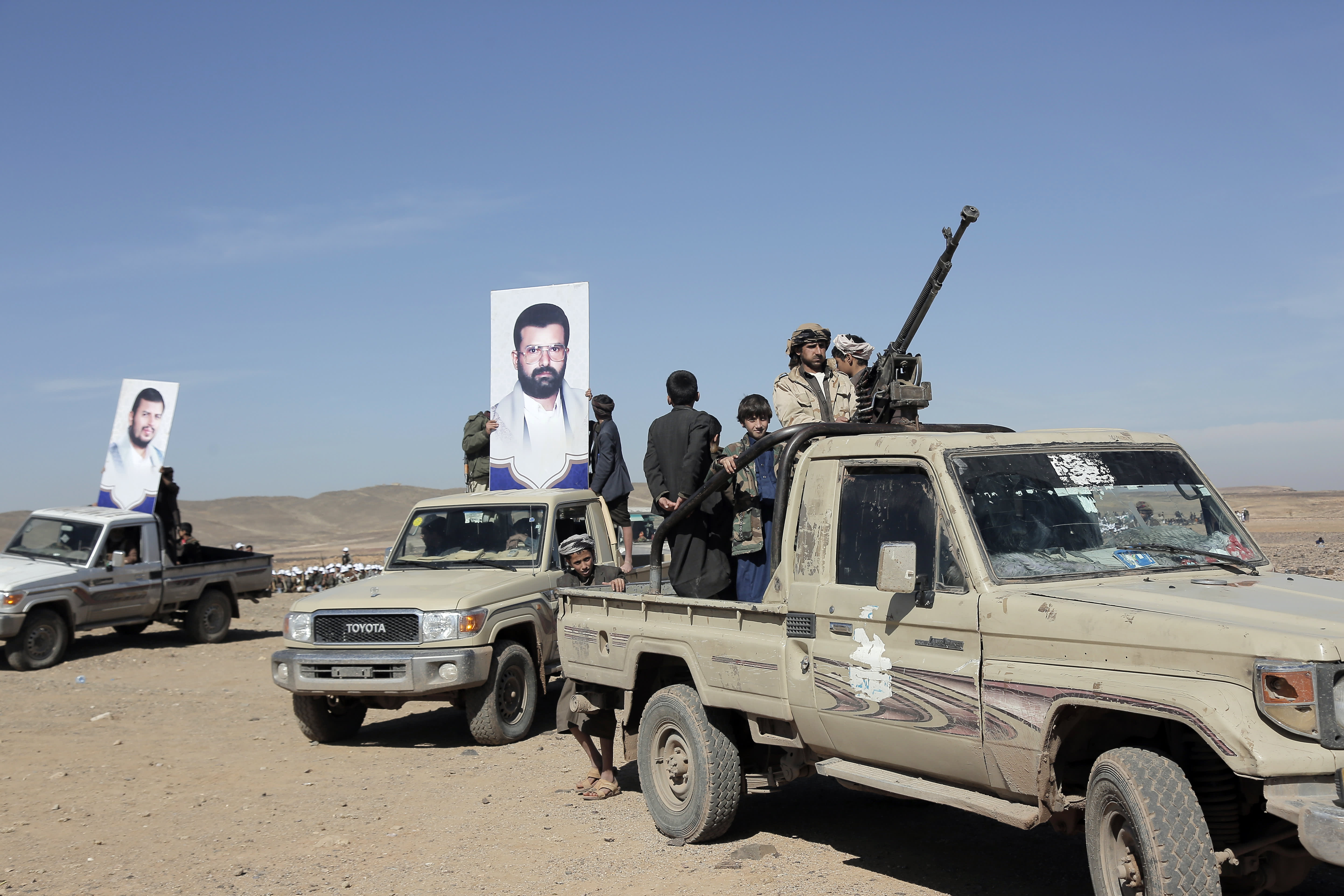
On Saturday, the United States and Britain launched a second wave of attacks on 36 Houthi targets in Yemen, aiming to further weaken Iran-backed groups that have persistently targeted American and international interests since the Israel-Hamas war.
The Houthis were targeted by warships and fighter jets in the latest strikes, which were launched in response to the drone strike that killed three U.S. troops in Jordan last weekend.
U.S. F/A-18 fighter jets and Navy destroyers targeted Houthi militants in 13 different locations in the Red Sea, according to U.S. officials who spoke on condition of anonymity. The officials did not authorize the release of information about the military operation.
The US warned that its response to the deaths of soldiers at the Tower 22 base in Jordan last Sunday would not be limited to one night, one target, or one group. However, the Houthis have been conducting almost daily missile or drone attacks against commercial and military ships transiting the Red Sea and Gulf of Aden, and they have made it clear that they have no intention of scaling back their campaign. It is not yet clear whether the allied assaults will deter them.
The Defense Secretary stated that the military action, supported by Australia, Bahrain, Canada, Denmark, the Netherlands, and New Zealand, conveys a clear message to the Houthis that they will face more consequences if they persist in their unlawful attacks on international shipping and naval vessels.
He stated: "We will not delay in safeguarding lives and the smooth movement of trade in one of the world's most vital waterways."
The Defense Department stated that the strikes aimed at sites linked to the Houthis' concealed weapons storage facilities, missile systems, launchers, air defense systems, and radars.
The U.S. and Britain conducted a joint operation in Yemen on Saturday, targeting Houthi weapon launchers, radar sites, and drones for the third time. The strikes were intended to convey a message to Iran that the U.S. holds Tehran responsible for arming, funding, and training the militias responsible for attacks against U.S. and international interests in the region, including in Iraq and Syria.
In Sanaa, Yemen's capital, a video shared online depicted explosions and at least one blast was visible lighting up the night sky. Residents reported that the blasts occurred near buildings associated with the Yemeni presidential compound. According to the Houthi-controlled state-run news agency, SABA, strikes occurred in al-Bayda, Dhamar, Hajjah, Hodeida, Taiz, and Sanaa provinces.
On Friday, the U.S. destroyer Laboon and F/A-18s from the Eisenhower destroyed seven drones launched from Houthi-controlled areas of Yemen into the Red Sea. The destroyer Carney also shot down a drone in the Gulf of Aden, while U.S. forces eliminated four more drones that were ready to launch.
The U.S. destroyed six anti-ship cruise missiles in Yemen hours before the latest joint operation, as it has repeatedly done when it detects a missile or drone ready to launch.
The Houthis' attacks have prompted shipping companies to change their routes, sending vessels around Africa through the Cape of Good Hope, which is longer, more expensive, and less efficient. Additionally, the threats have led the US and its allies to establish a joint mission to provide air defense for ships traveling the critical waterway from the Suez Canal to the Bab el-Mandeb Strait.
At any given time, approximately 400 commercial vessels travel through the southern Red Sea during regular operations.
The Islamic Resistance in Iraq, a coalition of militias backed by Iran, has been blamed by the U.S. for the Jordan attack. Iran has attempted to disassociate itself from the drone strike, stating that the militias operate independently of its control.
In an interview with AP in Baghdad, Hussein al-Mosawi, spokesperson for Harakat al-Nujaba, condemned the earlier U.S. strike in Iraq and stated that Washington "must understand that every action elicits a reaction." However, he also struck a more conciliatory tone and said, "We do not wish to escalate or widen regional tensions."
At the time of the attack, the targeted sites in Iraq were mostly empty of fighters and military personnel, according to Mosawi.
The Syrian Observatory for Human Rights, led by Rami Abdurrahman, reported that 23 rank-and-file fighters were killed. Meanwhile, Iraqi government spokesperson Bassim al-Awadi stated that 16 people, including civilians, were killed and there was significant damage to homes and private properties.
The U.S. said it had informed Iraq about the operation before it started.
An official from the U.S. stated that a preliminary evaluation of the battle damage revealed that all planned targets were hit, along with some unexpected ones that emerged during the mission, such as a surface-to-air missile site and drone launch sites. However, the official did not have any information on casualties yet.
Since October 18th, the Iraqi government has been in a precarious position due to attacks on U.S. bases in Iraq and Syria by a militia group known as Islamic Resistance in Iraq, which is backed by Iran. The group justified their actions as a response to Washington's support for Israel in the Gaza conflict.
Iraqi officials have tried to control militias while condemning U.S. strikes as a violation of Iraq's sovereignty. They have also called for the removal of the 2,500 U.S. troops in the country, which is part of an international coalition fighting IS. Last month, Iraq and U.S. military officials began formal talks to reduce the coalition's presence, a process that is expected to take years.
politics
You might also like
- Trump's Stargate AI investment announcement is outshone by Musk.
- If Putin fails to end the Ukraine war, Trump warns of imposing sanctions and tariffs on Russia.
- Ross Ulbricht, the creator of the Silk Road, was pardoned by Trump.
- Oracle, OpenAI, and Softbank to invest in AI infrastructure, announced by Trump.
- In his final moments in office, Biden granted clemency to his relatives.
